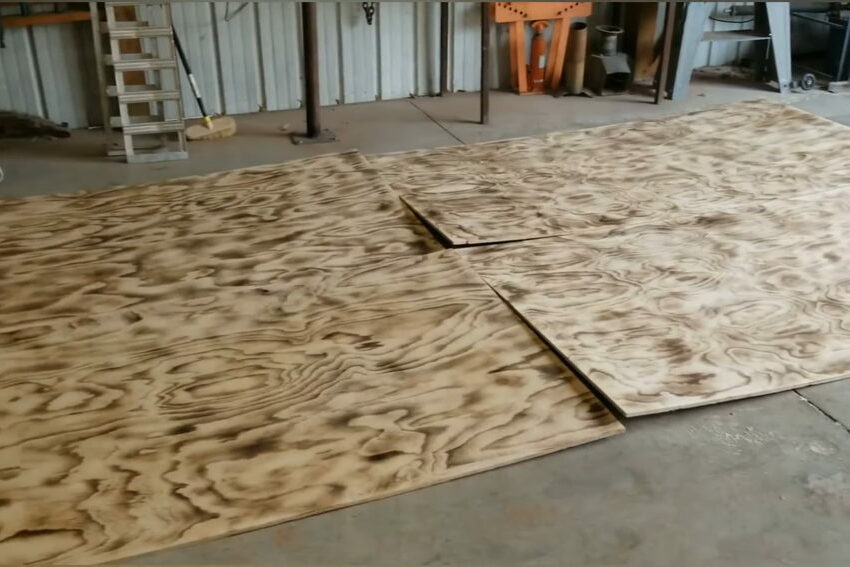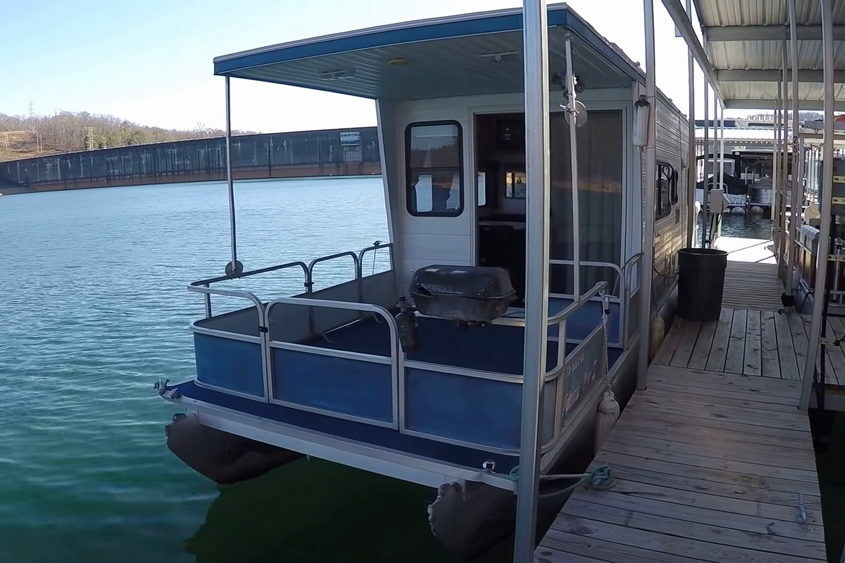Pontoon houseboats offer the best of both worlds, a spectacular blend of a sea-going vessel and a comfortable dwelling. These boats are constructed on a flat, floating platform called a ‘pontoon.’ These floating platforms allow the houseboat to be stable in water but provide enough flexibility to move it around with a small motor when desired. The best part about owning a pontoon houseboat is that it can be built cheaply. Over the years, they have evolved from mere functional designs to some of the most luxurious and aesthetically appealing residences.
Pontoon Houseboats Vs. Traditional Houses
Living on a pontoon houseboat is an entirely different experience compared to a traditional land-based house. The difference stems from the fundamental aspects of lifestyle, location, space, amenities, and even cost.
Mobility
One of the essential advantages of a pontoon houseboat is the ability to move. Unlike traditional homes, you are not pinned to a single geographical location. If you fancy a change of scenery, you can simply hoist your anchor and voyage off to a new location. The freedom to explore and live in diverse environments is a unique lifestyle perk offered only by a houseboat.
Connection with Nature
A pontoon houseboat allows you to experience nature intimately. Living afloat allows you to enjoy the sounds of water, unparalleled views of beautiful sunrises sunsets, and the ability to go for a swim or fish just by stepping outside your door. The serene, calming effects of being close to water can enhance your mental well-being, making this a major plus for many people.
Space and Amenities
While pontoon houseboats offer a sense of adventure and a strong connection with nature, they may require some concessions. One of these is living space. Because of the finite size of pontoons, houseboats generally have more limited living space compared to traditional houses, and you’ll need to make strategic use of every square foot.
Different Types of Pontoon Houseboats
The realm of pontoon houseboats presents a broad and diverse spectrum of types, catering to a variety of lifestyle needs, budgets, and aesthetic preferences. The types are typically defined by size, number, and type of amenities, and the extent of luxury involved. Let’s explore some of the most prevalent types:
Compact Pontoon Houseboats
Compact pontoon houseboats are the simplest and most affordable of the bunch. Typically housing a smaller living facility that may consist of a bedroom, bathroom, miniature kitchen, and a living area, these are perfect examples of efficiency and utility. Ideal for couples or small families, they allow you to enjoy the associated lifestyle without breaking the bank.
Mid-Sized Pontoon Houseboats
Mid-sized pontoon houseboats provide a more balanced mix of luxury, space, and price. Usually, they come with one to two bedrooms, a full-sized kitchen, a comfortable living area, and sometimes an extended deck for enjoying outdoor activities. These mid-sized boats provide greater comfort and amenities while still maintaining a reasonable cost and manageability.
Luxury Pontoon Houseboats
At the high end, you find luxury pontoon houseboats that are more akin to floating mansions or yachts. They boast multiple bedrooms, spacious baths, professionally equipped kitchens, sprawling living areas, state-of-the-art entertainment systems, and exquisite outdoor decks with various amenities like hot tubs, grill stations, and more. High-end materials and ultra-modern finishes elevate these houseboats to a level of opulence that parallels the most luxurious land-based homes. While they come with a hefty price tag, they offer a level of comfort, convenience, and style that’s hard to match.
Custom-Built Pontoon Houseboats
For those with a clear vision and budget flexibility, custom-built pontoon houseboats offer the opportunity to build a floating home entirely to one’s specifications. Every element, from the hull design to the interiors, decks, and features, can be customized. This is an excellent option for those looking for a unique houseboat that naturally fits their lifestyle needs.
How to Build a Houseboat on Pontoons?
Factors to Consider When Building
Initially, one must pay attention to several variables before starting construction.
1. Choosing the Right Material
The materials you utilize for construction largely dictate the houseboat’s longevity, so making the correct choices is paramount. Marine-grade plywood is a common choice due to its water resistance. Some builders opt for aluminum due to its durability and lightweight. Consideration should also be given to the materials used for weatherproofing and insulating your houseboat.
2. Size and Design
The size and layout of the houseboat are critical aspects that depend on your personal preference and the pontoon’s load-carrying capacity. The design should maximize space utilization while preserving comfort and the boat’s stability. A well-designed houseboat prioritizes functionality without compromising aesthetics.
3. Legalities and Permissions
Before building a houseboat, familiarize yourself with local maritime laws. Ensure your boat complies with safety and environmental regulations and that you have relevant permissions in place before starting your project.

After carefully considering the aforementioned factors, it’s time to start building your pontoon houseboat. Though the specific steps may vary, the following is a generalized guide:
1. Design: Start by designing your houseboat on paper or digital. Get a professional architect or engineer onboard, if needed. A thorough, detailed blueprint serves as the foundation for your project.
2. Build the Base: The next step is creating the pontoons and connecting them to form a sturdy, floating base. You can construct pontoons yourself using marine-grade materials, or they can be purchased.
3. Frame the House: Now, build the house’s framework on top of your base. Reinforce it to withstand marine conditions and ensure it is watertight.
4. Insulation and Walls: Install insulation material to maintain a comfortable inside temperature, then proceed with setting up the walls.
5. Interior and Amenities: Now comes the fun part – creating your customized, cozy interior! From kitchens to restrooms and bedrooms, style your houseboat as per your preference. Remember to install utility systems like plumbing and electricity.
6. Finishing: Finally, paint and weatherproof your houseboat to protect it against the elements. Install necessary safety equipment as per maritime regulations.
Lastly, remember to frequently inspect your houseboat and perform regular maintenance to ensure its longevity.

Benefits of Building a Pontoon Houseboat
- Tailoring layouts, facilities, and materials to your preferences.
- Overall costs can be controlled to suit your budget.
- Learning new skills during the DIY process.
- Strengthened relationship with your floating home.
- Enhanced familiarity with the boat improves future maintenance.
- Strategically designed areas for efficient space use.
- Freedom to decide where you place your home.
- Potential for environmentally friendly choices in the build process.
- Enjoyment in creating something with your own hands.
- Enjoy the benefits of a mobile lifestyle on water.
Tips for Building a Pontoon Houseboat
- Understand your needs, budget, and size specifications, and draw up a detailed blueprint before starting and cross-check it with professionals.
- Opt for marine-grade material to ensure the longevity and durability of your pontoon houseboat.
- Balanced weight distribution ensures the stability and safety of your houseboat. Pay attention to where heavy items are placed.
- Space is at a premium on any houseboat. Design your layout to maximize the use of available space efficiently.
- Proper insulation is a must to maintain internal temperatures and noise levels.
- Ensure you have proper safety features, including fire extinguishers, life vests, and safety railings.
- Check all local laws and regulations for houseboats and fulfill all legal requirements before proceeding.
FAQs
How much does it cost to build a pontoon houseboat?
Once you’ve gathered all of the necessary supplies, it’s time to start construction! Building a DIY pontoon houseboat is an affordable way to have your watercraft. It can cost between $5,000 and $10,000 to create one, depending on the size and features of the boat. You’ll need materials like lumber, plywood, nails, screws, decking materials (like cedar or treated pine), and marine hardware (like cleats or tie-downs). Many online resources provide detailed instructions for building a pontoon houseboat.
How long does it take to build a pontoon houseboat?
It takes about two weeks to build a pontoon houseboat. The process includes cutting the lumber, assembling the parts, and painting it. You also need to install the hardware and finish the boat. You can build a pontoon houseboat in your backyard or on a large property, but you’ll need to check with your local zoning laws before starting construction. Most cities require that you have a building permit.
How can I customize my pontoon houseboat?
Pontoon houseboats are great for fun and easy transportation. You can customize them to make them look and feel like your own, adding or removing features, changing the boat’s color, or even building a dock. You can also find accessories that will help you enjoy your pontoon houseboat more (like fishing poles) or even add a small kitchen.
How do I care for my pontoon houseboat?
Caring for your pontoon houseboat involves regular cleaning and maintenance. Pontoon houseboats are meant for recreational use, so keeping them clean and in good condition is necessary. Cleaning can be done with a hose or bucket; engine, propellers, and seals should also be checked regularly for damage.

